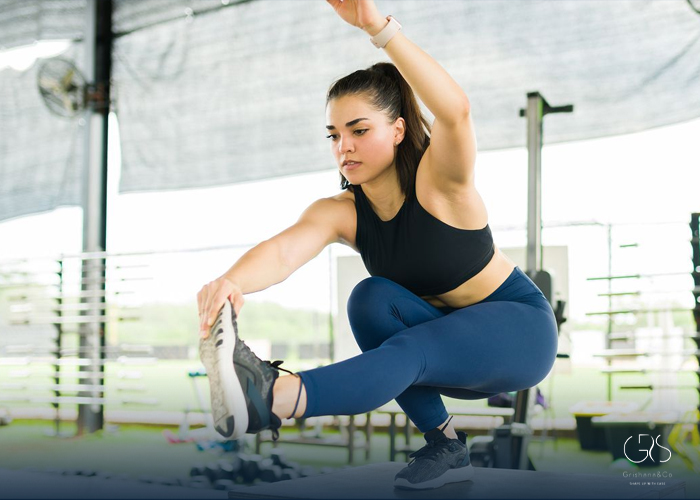Physical fitness is a journey that often involves pushing the boundaries of what the body is capable of. One exercise that epitomizes this challenge is the pistol squat. This single-leg bodyweight movement requires strength, balance, and control, making it a popular choice among fitness enthusiasts looking to enhance their lower body strength and mobility.
Which Muscles Are Used In Pistol Squats?
The pistol squat is a demanding exercise that targets multiple muscle groups in the lower body and core. The primary muscles engaged during a pistol squat include the quadriceps, hamstrings, glutes, and calves. The unilateral nature of the exercise also activates stabilizing muscles in the hips and ankles, helping to improve balance and coordination.
(I recommend reading my article about squats for sleep.)

The Eccentric Phase (Going Down)
During the eccentric phase of a pistol squat (lowering down), the quadriceps work to control the descent while the hamstrings and glutes assist in maintaining stability. The eccentric contraction of these muscles is crucial for controlling the movement and preventing injury.
The Concentric Phase (Rising Up)
In the concentric phase of a pistol squat (rising up), the quadriceps, glutes, and calves work synergistically to push the body back to the starting position. This phase requires strength and power to move against gravity and return to a standing position.
The Benefits of Performing Pistol Squats
The benefits of incorporating pistol squats into your workout routine are numerous and diverse. Some of the key benefits include:
- Improved lower body strength and muscle definition.
- Enhanced balance, coordination, and proprioception.
- Increased flexibility and mobility in the hips, knees, and ankles.
- Correction of muscle imbalances between the left and right sides of the body.
Studies have shown that unilateral lower body exercises like the pistol squat can improve muscle imbalances and functional movement patterns. A study published in the Journal of Strength and Conditioning Research demonstrated that participants who performed unilateral exercises like the pistol squat saw significant improvements in balance and lower body strength compared to those who only did bilateral exercises (source).

How to Prepare for Pistol Squats
Before attempting pistol squats, it is essential to build a foundation of strength and stability through targeted exercises. Some preparatory exercises that can help you work towards performing pistol squats include:
- The Bulgarian split squat: This exercise targets the quadriceps, hamstrings, and glutes while also improving balance and stability .
- The single-legged Romanian deadlift: A great exercise for strengthening the hamstrings, glutes, and core while improving balance and proprioception (source).
- The single-arm farmer’s carry: This exercise challenges grip strength, core stability, and overall balance.
How to Perform a Pistol Squat
To execute a pistol squat correctly, follow these steps:
- Start by standing with your feet shoulder-width apart.
- Lift one leg off the ground and extend it in front of you.
- Slowly lower your body down by bending the knee of the supporting leg.
- Keep your chest up and back straight as you lower down.
- Push through the heel of the supporting leg to return to the starting position.
Mistakes to Avoid
As with any exercise, it is essential to perform pistol squats with proper form to avoid injury and optimize results. Common mistakes to avoid include:
- Allowing the knee to collapse inwards during the movement, which can lead to knee strain.
- Rounding the back or leaning too far forward, putting unnecessary strain on the lower back.
- Using momentum to complete the squat instead of controlled, intentional movement.
Conclusion
Pistol squats are a challenging yet rewarding exercise that can help enhance lower body strength, balance, and mobility. By incorporating pistol squats into your fitness routine and ensuring proper form and preparation, you can achieve significant improvements in muscle strength, coordination, and overall physical performance. Remember to progress gradually and listen to your body to prevent injury and make the most of this dynamic exercise.
Sources
- ACE Fitness, Single-leg Romanian Deadlift
- NASM, Bulgarian Split Squat
- Journal of Strength and Conditioning Research, Do Lower-Body Dimensions and Body Composition Explain Vertical Jump Ability?










